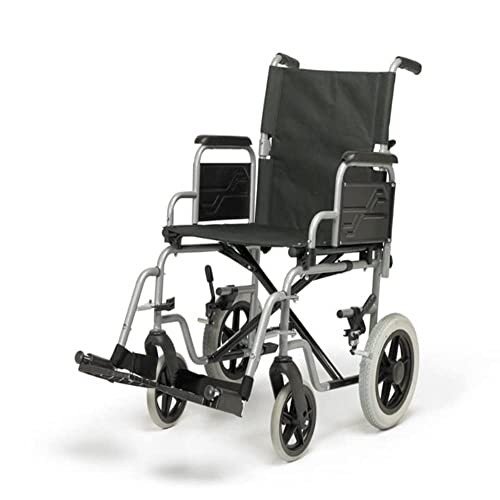A Comprehensive Guide to Buying a Mobility Scooter
Mobility scooters have actually become a crucial tool for numerous people wanting to improve their independence and mobility. With a huge array of models and features available, choosing the ideal mobility scooter can be intimidating. This short article provides an informative guide to assist consumers browse their alternatives, examine their needs, and make a notified purchase.
Comprehending Mobility Scooters
Mobility scooters are electric cars developed for people who experience mobility difficulties. They are especially useful for elders, those with disabilities, or people recuperating from injuries. Mobility scooters can vary extensively in regards to style, functions, and pricing.
Kinds Of Mobility Scooters
Before starting a purchase, it's essential to understand the various types of mobility scooters available:
Three-Wheel Scooters:
- Generally more maneuverable in tight spaces
- Lightweight and portable
- Perfect for indoor usage
Four-Wheel Scooters:
- Offer higher stability and balance
- Appropriate for outside use over various terrains
- Usually have a longer battery life
Foldable/Portable Scooters:
- Designed to be easily transported and saved
- Can frequently suit the trunk of a car
- Suitable for those who travel regularly
Durable Scooters:
- Built to accommodate bigger people
- Often featured more robust features for outside use
- Normally equipped with bigger batteries for extended variety
Factors to Consider When Buying a Mobility Scooter
1. Weight Capacity
Select a mobility scooter that can support the user's weight. Many scooters have a weight limit ranging from 250 to 500 pounds. It is crucial to make sure that the scooter can accommodate the user comfortably.
2. Range and Battery Life
The variety is how far the mobility scooter can travel on a single charge. Normal ranges differ between 10 to 30 miles. Consider the user's day-to-day activities and choose a scooter with an ideal range.
3. Scooter Dimensions
Think about the size of the scooter, including its weight and measurements. mobility scooter for sale might be perfect for narrow hallways and tight spaces, while bigger models use extra stability and comfort.
4. Surface Capability
Assess where the scooter will primarily be utilized. If the user prepares to travel mostly on pavement, a lightweight design might be sufficient. However, if the user needs to traverse gravel or unequal surfaces, consider a four-wheel scooter developed for off-road use.
Top Features to Look For
Comfort
- Adjustable Seats: Look for scooters with cushioned and height-adjustable seats to make sure convenience throughout travel.
- Armrests: These improve security and assistance while navigating.
Security and Visibility
- Headlights and Taillights: Essential for nighttime use.
- Turn Signals and Reflectors: Improve presence and safety while on the road.
User-Friendly Controls
- Joystick or Drive Controls: These should be user-friendly and easy to control.
- Easy-to-Read Displays: A control board that reveals battery life, speed, and distance can boost the user experience.
Extra Features
- Storage Compartments: These provide added benefit for carrying individual products while on the go.
- Weather Protection: Consider designs with rain covers or windshields if used in variable weather condition conditions.
Cost Considerations
When budgeting for a mobility scooter, costs can range anywhere from ₤ 500 to over ₤ 5,000 depending on the model, features, and brand name. Extra costs may include:
- Extended Warranty: Protects versus problems and can save cash in the long run.
- Accessories: Optional functions, such as updated seats, lights, or storage solutions.
| Function | Cost Range |
|---|---|
| Fundamental Models | ₤ 500 - ₤ 1,500 |
| Mid-Range Models | ₤ 1,500 - ₤ 3,000 |
| High-End Models | ₤ 3,000 - ₤ 5,000 |
Financing Options
Lots of sellers offer funding plans, and some local federal government initiatives might provide grants or assistance for those in requirement. Examine possible monetary help with community resources or mobility service companies.
Frequently asked questions about Buying a Mobility Scooter
What is the distinction between a mobility scooter and a wheelchair?
Mobility scooters are motorized and enable users to navigate separately, while wheelchairs might require physical support or manual operation.
How do I maintain a mobility scooter?
Routine maintenance includes examining battery life, cleaning the scooter, and examining tires and brakes. Always describe the user manual for specific standards.
Can mobility scooters be utilized indoors?
Yes, lots of models are created for both indoor and outdoor use. However, three-wheel scooters tend to be better fit for indoor navigation due to their tighter turning radius.
Are mobility scooters covered by insurance coverage?
Some insurance plans cover a part of the expenses for mobility scooters if they are considered clinically required. Contact your supplier for particular information.
How quick can a mobility scooter go?
A lot of mobility scooters have an optimal speed ranging from 4 to 8 mph. Nevertheless, the proper speed might differ depending upon regional guidelines.
Purchasing a mobility scooter can substantially improve one's self-reliance and lifestyle. By comprehending the types, functions, and costs associated with mobility scooters, prospective buyers can make educated decisions that fit their requirements and choices. Personalization and comprehensive research study are key to ensuring satisfaction with this essential financial investment.

